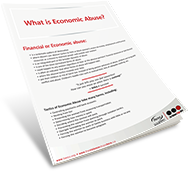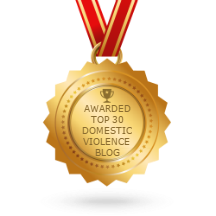Your safety plan is an adaptable tool to help keep you safe in your ever-changing situation.
Violence against women continues as an epidemic. Planning for safety can be one way to take back power in abusive relationships. Although you can’t control an intimate partners use of violence, planning for safety can help you evaluate, define options and opportunities for liberation and safety.
If you’re in an abusive relationship, the risk of lethal violence increases during or just after a woman has left an abusive partner, therefore planning for safety is critical. A personalized safety plan is a practical plan that includes ways to remain safe while in a relationship, planning to leave, or after you leave.
Safety During A Violent Incident
We cannot always avoid violent incidents. In order to increase safety, we may use a variety of strategies. I can use some or all of the following strategies:
- I will use my judgment and intuition. If the situation is very serious, I can give my partner what they want to calm him/her down. I have to protect myself until I/we are out of danger.
- When I expect we are going to have an argument, I will try to move to a space that has fewer risks, such as __________________________. (Try to avoid arguments in the bathroom, garage, kitchens, near weapons, or in rooms without access to an outside door.)
- If violence is unavoidable, I will make myself a small target. By going to a corner and curling up into a ball with my face protected and arms around each side of my head.
- I will try to avoid areas where my children are, as my partner may hurt them as well.
- If I decide to leave, I will _________________________________. (Practice how to get out safely, practice with your children as well. What doors, windows, elevators, stairwells, or fire escapes would I use?)
- I will use _________________ as my code word with my children or my friends so they can call for help.
- I will plan for what I will do if my children tell my partner about the plan or if my partner otherwise finds out about my plan.
- Let trusted friends and neighbors know of your situation and develop a plan and visual signal for when you need help. I can tell _________________________________ about the violence and request they call the police if they hear suspicious noises coming from my house.
- I can keep my purse and car keys ready and put them _______________________ (place)in order to leave quickly. If I drive, I will make a habit of backing the car into the driveway and keeping it fueled.
- If I have to leave my home, I will go _________________________. (Decide this even if I do not think there will be a next time.) If I cannot go to the location above, then I can go to_________________________________________ or _________________________________________.
Safety When Preparing to Leave
Risk of harm and violence often escalates when a woman decides to leave an abusive relationship. I can use some or all of the following
Strategies:
- I will leave money and an extra set of keys with ___________________________ so I can leave quickly.
- I will keep copies of important documents or keys.
- To increase my independence, I will open an individual savings account by
- _______________________ (date), or I will find a safe place to hide cash.
- Other things I can do to increase my independence include:_______________________________________________________________________________________________________________________
- Battered Women’s Support Services number is 1-855-687-1868. I can seek a transition house by calling Victim Link 1-800-563-0808. I will call ahead of time to find out the procedure for admission to the transition house.
- I will check with ____________________________________ and________________________ to see who would be able to let me stay with them or lend me some money.
- I can leave extra clothes with _________________________________.
- I will sit down and review my safety plan every ______________________ (no more than six weeks) in order to plan the safest way to leave the residence.
- _____________________________ (an advocate or friend) has agreed to help me review this plan.
Safety Planning During Pregnancy
Pregnancy can be an especially dangerous time for women in abusive relationships, and abuse often begins or escalates during the pregnancy.
How can you get help?
- If you’re pregnant, there is always a heightened risk during violent situations. If I live in a home with stairs, I will try to stay on the first floor.
- If I am being attacked I will lay on the floor in the fetal position with my arms around my stomach.
- If I feel safe to do so, I will tell my doctor during a visit. If my partner goes to these appointments with me, I will try to find a moment when they’re out of the room to ask about creating an excuse to talk to the doctor/nurse alone.
Safety Planning with Children
- I will teach my children how to use the telephone to contact 911 (Be careful about placing responsibility on children.)
- I will instruct them to leave the home if possible when things begin to escalate, and provide a safe option of where they can go (ie neighbor’s house or family members)
- I will teach them to never intervene even though they may want to protect me.
- We will create a list of people that they are comfortable talking with and expressing themselves to.
Planning for Unsupervised Visits
If you have separated from the abusive partner and are concerned for your children’s’ safety when they visit your ex, developing a safety plan for while they are visiting can be beneficial.
- Come up with ways that your children can stay safe using the same model as you would for your own home. Have them identify where they can get to a phone, how they can leave the house, and who they can go to (if they are old enough).
- Give a cell phone to your children when they go for visits that could be used in case of an emergency.
- Avoid exchanging custody at your home or your partner’s home.
- Meet in a safe, public place such as coffee shop or restaurant
- Bring a friend or relative with you to the exchanges, or have them make the exchange if it’s an option.
Safety Planning with Pets
Many women are not able to escape their abusive partners because they are concerned about what will happen to their pets when they leave.
If you’re creating a safety plan of your own to leave an abusive relationship, safety planning for your pets is important as well. If possible, don’t leave pets alone with an abusive partner. If you are planning to leave, talk to friends, family or your veterinarian about temporary care for your pet.
- Bring food for them if you can
- Copies of their medical records
- Important phone numbers, like their veterinarian
- Contact transition houses to see if they will allow you to bring your pets
- If you’ve left your partner, change your pet’s veterinarian and avoid leaving pets outside alone.
- If you’ve had to leave your pet behind with your abusive partner, it might be an option to ask police for assistance.
Safety Planning After You Have Left
- I can change the locks on my doors and windows as soon as possible.
- I can replace wooden doors with steel/metal doors.
- I can install security systems including additional locks, window bars (not generally recommended due to fire escape hazards), poles to wedge against doors, an electronic system, etc.
- I can purchase rope ladders (“fire ladders” are available from hardware and discount stores) to be used for escape from second floor windows.
- I can install smoke detectors and purchase fire extinguishers for each floor in my house/apartment.
- I can install an outside lighting system that lights up when a person is coming close to my house (motion detectors).
- Teach your children to tell you if someone is at the door and to not answer the door on their own.
- Keep your no contact order near you at all times, if you have one.
- I will tell people who take care of my children which people have permission to pick up my children and that my partner is not permitted to do so. Some will require a court order. The people I will inform about pick -up include: school, day care, baby sitter, neighbor.
- Put your kitchen utensils and knife block in the cupboards so they are not as accessible.
Safety with a Protective Order
I recognize that I may need to ask the police and the courts to enforce my Protective Order. The following are some steps that I can take to help the enforcement of my Protective Order:
- I will keep my Protective Order (and/or probation orders or other such legal documents) __________________________________ (location). (Always keep it on or near my person. If I change purses that is the first thing that should go in it.)
- The telephone number for the Crown Counsel and local law enforcement agency is _______________.
- I can call Battered Women’s Support Services if I am not sure about protection orders, or if I have some problems with my Protective Order. The number to call is 1-855-687-1868
- I will inform my employer, my closest friend, and _____________________________ (other) that I have a Protective Order in effect. (I may give them copies, too.)
- If my partner violates the Protective Order, I can call the police and report a violation, contact the Crown Counsel, and/or call my advocate. (Make sure it gets documented!!!) If the police do not help, I can contact my advocate or Watch Commander at the Police Department to file a complaint. My advocate’s name is ______________________ and phone number is _________________. The Crown Counsel’s name is ____________________and phone number is ____________________.
Safety in the Workplace
It’s up to you to decide if and when you will tell others that that you experiencing violence in your intimate relationship and that you may be at continued risk. Friends, family, and coworkers can help support you. You should consider carefully which people to invite to help secure your safety.
I might do any or all of the following:
- I can inform my boss, the security supervisor, and ______________________________(other) at work of my situation.
- I can ask _____________________________ to help screen my telephone calls at work.
- When leaving work, I can __________________ _____________________________.
- When driving home, if problems occur, I can_____________________________________________.
- If I use public transit, I can ____________ _____________________________.
- I can use different grocery stores and shopping malls to conduct my business and shop at hours that are different from those hours in which I shopped when I resided with my abusive partner
- I will always remember to be careful and watchful of my surroundings.
Safety and Drug or Alcohol Use
The use of any alcohol or other drugs can reduce a woman’s awareness and ability to act quickly to protect herself. Furthermore, the use of alcohol or other drugs by the batterer may give him/her an excuse to use violence. Therefore, in the context of drug or alcohol use, a woman needs to make specific safety plans. If drug or alcohol use has occurred in my relationship.
I can enhance my safety by doing some or all of the following:
- If I am going to use, I can do so in a safe place and with people who understand the risk of violence and are committed to my safety.
- I can also _________________________________________________.
- If my partner is using, I can _____________________________.
- To safeguard my children, I might ________________________________________ .
Safety and My Emotional Health
The experience of violence is usually exhausting and emotionally draining. The process of building a new life for myself takes MUCH COURAGE AND INCREDIBLE ENERGY.
To conserve my emotional energy and resources and to avoid hard emotional times, I can do some of the following:
- If I feel down and ready to return to a potentially abusive situation, I can ______________________________________ and ___________________________________.
- When I have to communicate with my partner in person or by telephone, I can ______________________________________ and ___________________________________.
- I can try to use “I can …” statements with myself and to be assertive with others.
- I can tell myself “__________________________________________” whenever I feel others are trying to control me.
- I can read ___________________________________________ to help me feel stronger.
- I can call ____________________________________, __________________________________, and _____________________________ as other resources to be of support to me.
- Other things I can do to help myself feel stronger are ______________________________________ and_______________________________________.
- I can take care of myself by _____________________________________________________.
- I can attend workshops and support groups at Battered Women’s Support Services or: or: to gain support and strengthen my relationships with other people.
Things to Have Prepared To Take With You
Identification
- Driver’s license
- Birth certificate and children’s birth certificates
- Social security card
- Money and/or credit cards
- Banking information
Legal Papers
- Protective order(s)
- Copies of any lease or rental agreements, or the deed to your home
- Car registration and insurance papers
- Health and life insurance papers
- Passport
- Divorce and custody papers
Emergency Numbers
- Local police
- Battered Women’s Support Services, 1-855-687-1868 or your local organization
- Friends, relatives and family members
- Family doctor
Other
- Medications
- Extra set of house and car keys
- Pictures and sentimental items
- Several changes of clothes for you and your children
- Emergency money




